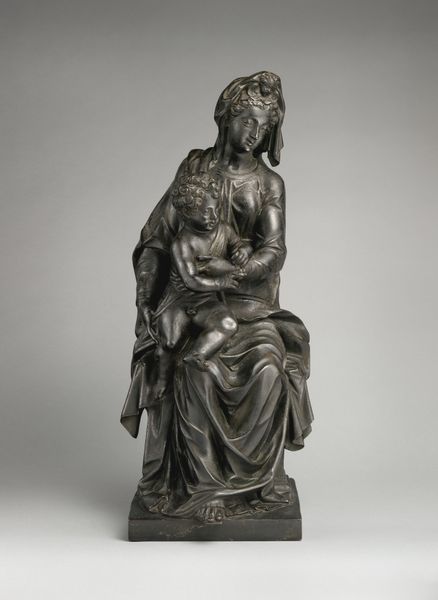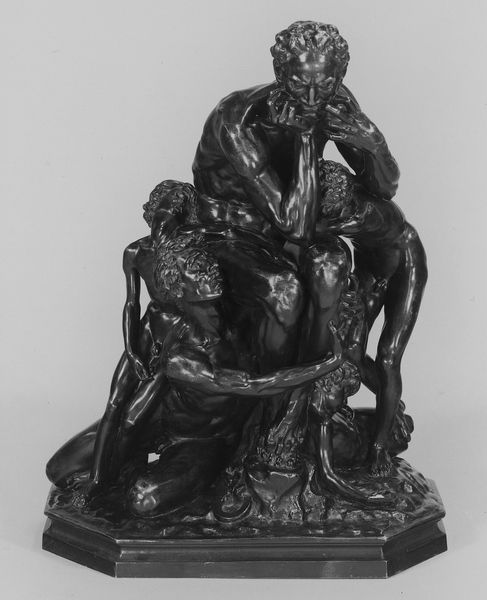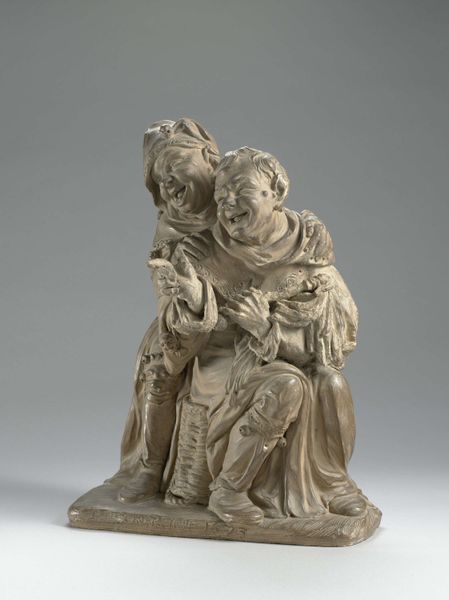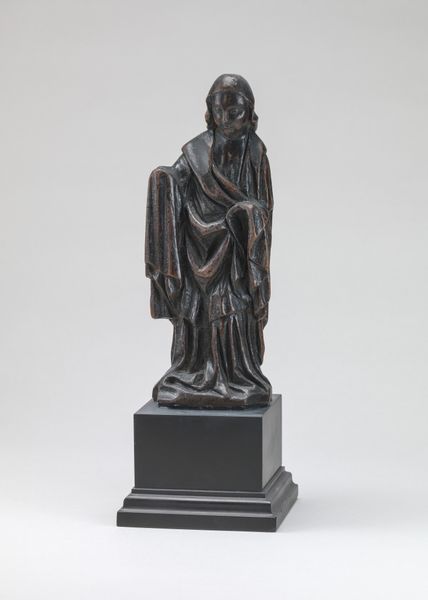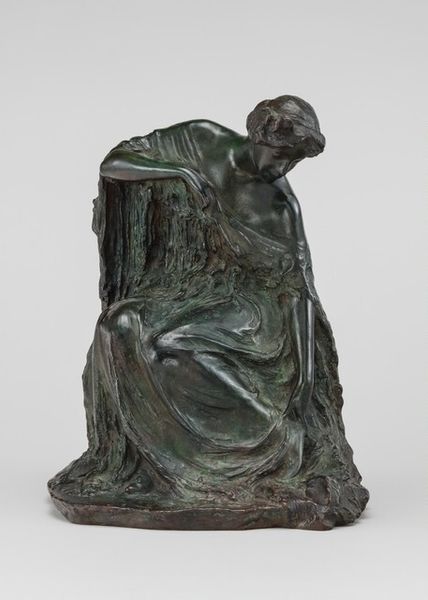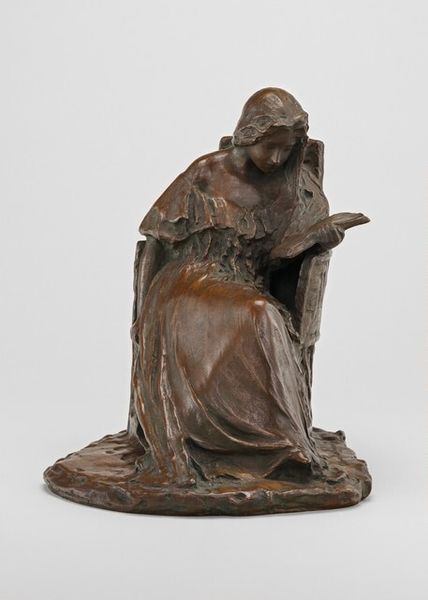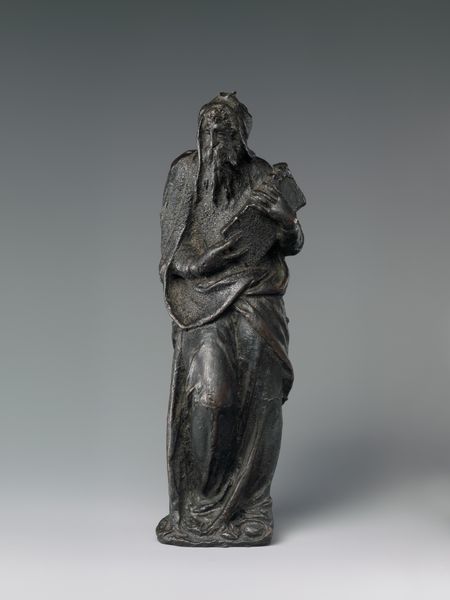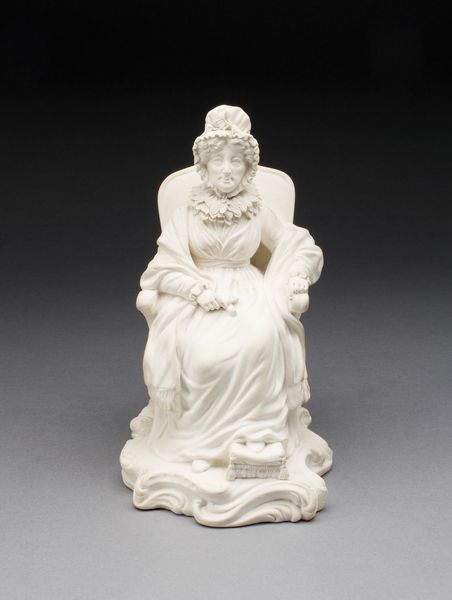
bronze, sculpture
#
portrait
#
arts-&-crafts-movement
#
sculpture
#
bronze
#
figuration
#
sculpture
Dimensions: overall: 30.48 × 21.59 × 23.81 cm (12 × 8 1/2 × 9 3/8 in.)
Copyright: National Gallery of Art: CC0 1.0
Curator: Here we have Bessie Potter Vonnoh's bronze sculpture "Enthroned", created sometime between 1902 and 1910. Editor: The patina immediately strikes me—that deep, almost sorrowful green-brown. It lends the figures a sense of gravity and permanence. What does 'enthroned' suggest here? Curator: It's a portrait of domesticity, of course. Look at the way Vonnoh has rendered the folds of the woman's gown, how they pool around her, creating a sense of volume and weight. This was cast using the lost wax method, where she built the mold of this complex form and then melted the wax to form the shape in bronze, preserving very tactile qualities. Editor: Indeed, it seems like a material translation of power structures. She's literally 'enthroned', yes, but she's also a figure whose identity, especially at the turn of the century, was so firmly embedded in her role as a mother and wife. Her authority derived almost entirely from her reproductive labor. Curator: Vonnoh’s artistic production and participation in Arts and Crafts movements sought a connection between high art ideals and craftsmanship to democratize art production—moving towards something more accessible, that could speak to modern domesticity and its materials. The rough-hewn texture, despite the smooth surface of the metal itself, does make it seem more immediate, accessible... less imposing. Editor: And those children clinging to her, one with an almost possessive kiss? It brings to the forefront a visual interrogation of dependence, intergenerational roles, and what we understand to be female duty and labor. Curator: Considering her role in the context of the time as a female sculptor during a moment where those venues of craftsmanship were traditionally dominated by men, Vonnoh pushes our reading of motherhood and work together to forge new visual representation and economic participation within the arts. Editor: This isn't merely a scene of maternal tenderness, it’s a snapshot of the power and limitations inherent in the period's vision of womanhood. Vonnoh challenges what could or should have been conceived from domestic representation at that time. Curator: Precisely. It really emphasizes the artistry, technique, and time required to create objects and narratives we deem mundane. Editor: Seeing her representation really emphasizes how much the narratives and materials associated to this image has change or endured depending on how we perform motherly figures within patriarchal conventions. Thank you.
Comments
No comments
Be the first to comment and join the conversation on the ultimate creative platform.


